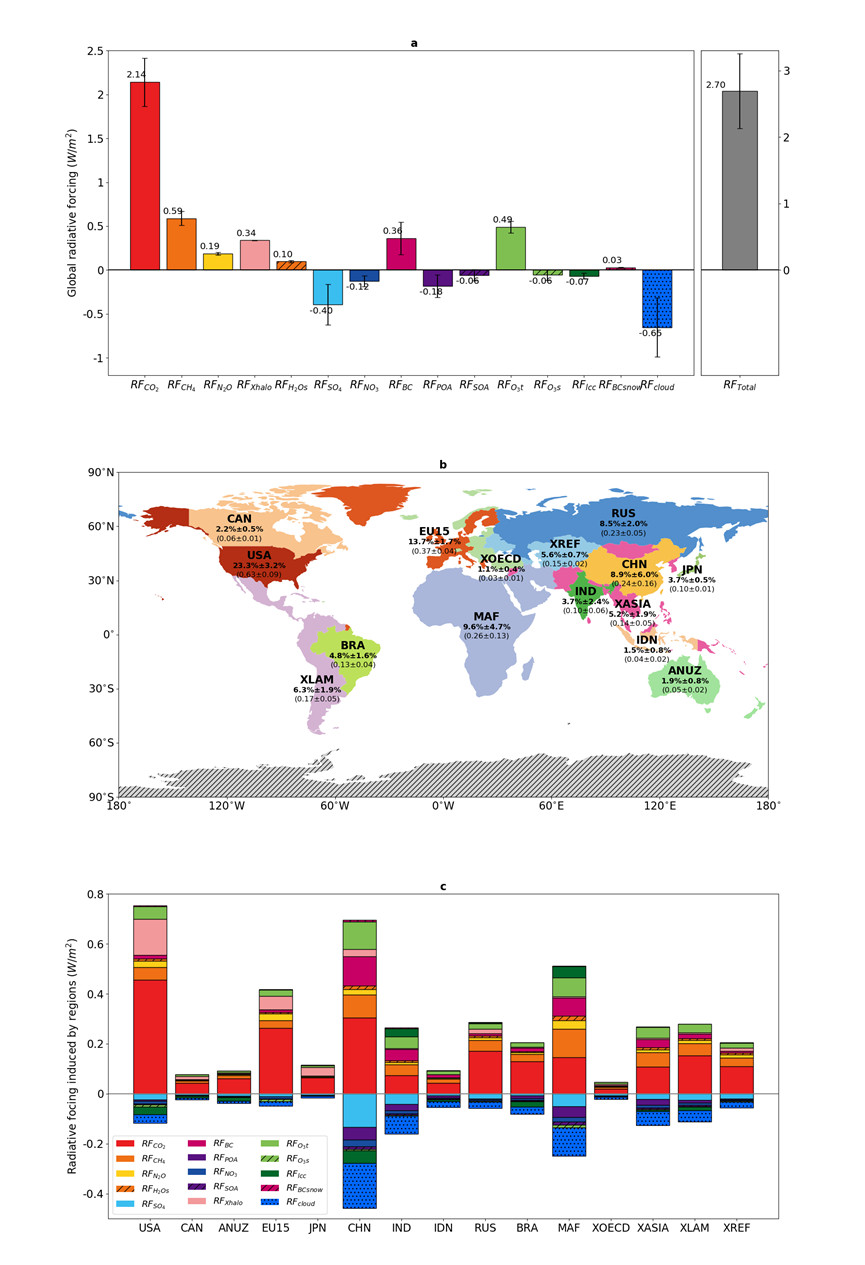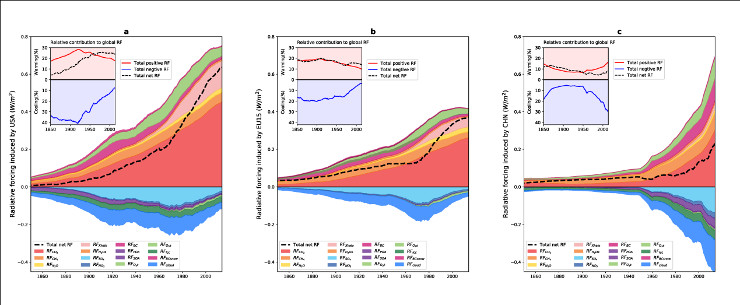The Earth receives the energy radiated by the Sun and heats up. By absorbing infrared radiation, greenhouse gases in the atmosphere enhance this effect and exert a positive "radiative forcing". On the other hand, some aerosols reflect a fraction of the Sun's radiation back into space, cooling the atmosphere via a negative radiative forcing. Greenhouse gases like carbon dioxide are long lived, which means that even if the emissions were stopped, their concentration and thus their radiative forcing will continue for decades to centuries.
Understanding how different countries and regions contribute to global radiative forcing is essential to effectively implement the Paris Agreement processes, based on "common but differentiated responsibilities."
Using a simplified Earth system climate model, an international collaboration including researchers from China, Austria, and France quantified the radiative forcing related to global greenhouse gas emissions and aerosols. They then separated the regional contributions of the emissions, taking into account all human activities since the beginning of the industrial period. Indeed, some of the long-lived greenhouse gases emitted in the last century, such as CO2, are still present in the atmosphere and continue to warm the climate.
In 2014, the top three contributors to climate change, all human activities combined, were:
- The United States of America at 23.3% (± 3.2%),
- The European Union at 13.7% (± 1.7%),
- The People's Republic of China at 8.9% (± 6.0%).
According to the scientists' modeling, greenhouse gases dominate the contribution to global warming in developed countries, while for developing countries, short-lived climate disruptors such as aerosols and ozone play a significant role. "Sulfate aerosols help cool the climate, but at the cost of poor air quality," explains Yves Balkanski, a scientist at LSCE and co-author of the study.
"The originality of this study is to be able to attribute the climate change caused by each country, taking into account the complex interactions between the various compounds emitted to pass from emissions to air concentrations," says Philippe Ciais, who initiated this study at LSCE with Thomas Gasser, now a researcher in Austria at the International Institute for Applied Systems Analysis.
Anthropogenic radiative forcing in 2014:
Distribution of the different components of global radiative forcing, some of which are positive (CO2, CH4, N2O emissions, etc.) and others negative (SO4, NO3, cloud emissions, etc.)
Geographical distribution of global radiative forcing in 15 regions of the world.
Composition of the radiative forcing in its various components for each of the 15 regions.

Historical time series of absolute contributions to global radiative forcing from the three major regions: The United States of America, the European Union and the People's Republic of China. Positive and negative components are stacked separately and the net balance is represented by the black dashed lines. Insets show the relative contribution of each region over the last three decades.